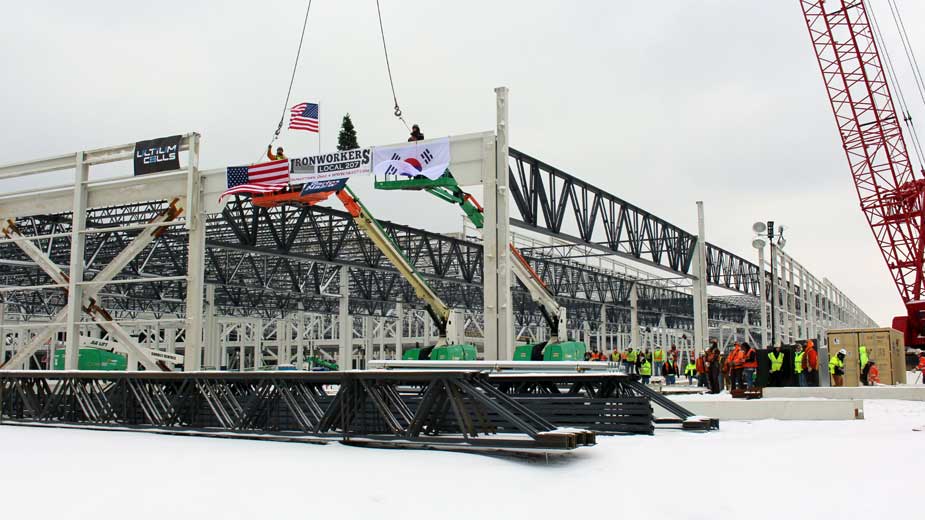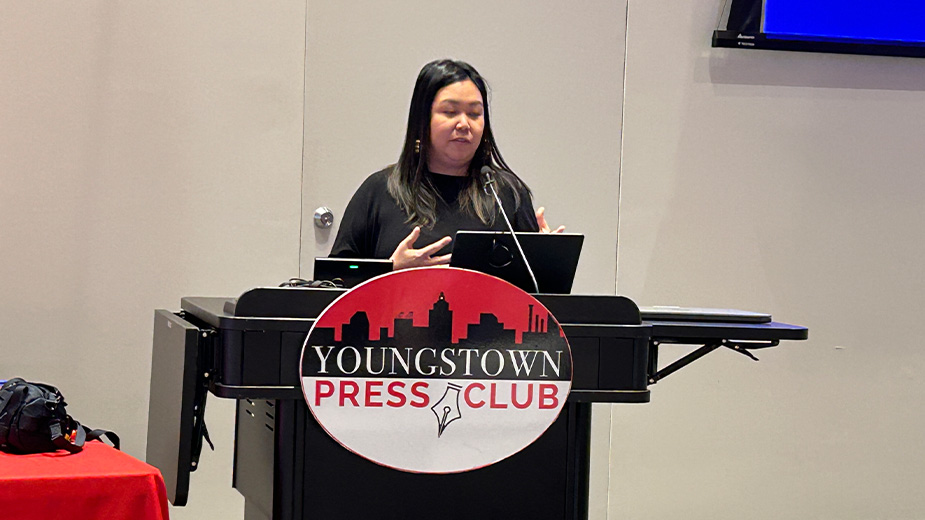Lordstown Projects Could Keep Region’s Construction Industry Thriving
YOUNGSTOWN, Ohio – In the decade since the Great Recession, construction jobs recovered at four times the rate overall employment in northeastern Ohio, and major projects such as the Ultium Cells plant position the region for further employment growth in the sector for at least through 2025, a new Team NEO report says.
Team NEO, an economic development entity that focuses on an 18-county region that includes Mahoning, Trumbull and Columbiana counties in Ohio, issued its quarterly economic review this morning. It’s the first time the agency has looked at the construction sector specifically in such a report.
As the report’s title, “Construction Pre- and Post-Pandemic” sugests, it looks at the sector’s performance both before the coronavirus pandemic hit and projects its future performance, said Jacob Duritsky, Team NEO vice president of strategy and research.
Construction is “a significant employer” in northeastern Ohio, representing 80,000 jobs, he said, or about 5% of its overall employment at any one time. It was “greatly impacted” by the Great Recession in 2008 and 2009, and continued to decline about 5% in 2010 before recovering.
Employment in the sector grew by 19% between 2009 and 2019, compared with 5% overall growth in northeastern Ohio employment during the same period.
“It rebounded incredibly well relative to the overall economy,” he said.
Man hours tracked by the Builders Association of Eastern Ohio and Western Pennsylvania bottomed out in 2010, “then in 2012 and 2013 we had a nice uptick in hours,” said Kevin Reilly, vice president of the trade group. Hours dropped off again after that, but he noted that some projects are excluded from tracking.
“If we were to get the data from all the man hours on those projects, then we would probably have some increase,” he said.
As did the recession, the pandemic took its toll on construction employment, though to a lesser extent than it did on overall employment. Construction jobs in the region dropped just 3%, compared with a decline between 8% and 9% in overall employment.
“This was not a sector where people in great quantities could leave. They were deemed essential employees in most cases and continued to work,” Duritsky said. So the sector not only didn’t decline seriously but helped drive the economy forward during a “very tough time.”
The sector is projected to regain the jobs lost during the pandemic in 2021 and add another 10% net jobs through 2025, according to the report.
“If you compare that to total northeast Ohio employment, in 2025 we’re still projecting to be about 3% below where we were in 2019,” Duritsky said. “That trend we saw coming out of the Great Recession looks like it will continue as the sector continues to add new equipment and jobs.”
The industry’s gross domestic product during the pandemic tracked closely to the performance of the region overall, with “very little decline” he said. It is projected to gain comparable to overall GDP growth in the region, between 5% and 10%.
“You don’t see quite the gains in GDP that you do in manufacturing or something because it is such an employment-driven sector,” he said.
Construction also ranks No. 8 among the top occupations in the region in terms of pay, according to the report. The annual average pay for positions within the sector – a figure that includes executives and sales personnel as well as trade-related occupations – is $74,258. That puts it just below manufacturing and ahead of sectors like transportation/warehousing and health care/social assistance.
Work on existing projects already is straining the construction workforce locally.
“If you talk to any one of the trades at this point, every one of the union halls is empty,” Reilly said. “We’re in March, which is not even peak construction season. One local union, which has about 240 members, recently brought on 15 new people and is going to need more.”
Read Team NEO’s full report HERE
The need for more workers in the sector is only going to grow through 2025, driven in part by projects like the Ultium Cells battery plant now being built in Lordstown.
“There is a significant amount of hours and a significant amount of employment on that project,” Reilly said. In addition, work could begin as soon as this year on a second energy plant in Lordstown, he said.
The construction industry also is looking to health care and institutional university investments to drive work, as well as infrastructure, “which is such a huge piece of it,” Duritsky said.
“They’re looking three to five years out as an industry and seeing a pretty full pipeline of projects already,” he said. “So the momentum in this industry – and the data backs this up – doesn’t seem to be really going anywhere.”
“Hopefully there’s some infrastructure improvements that will get done,” Reilly said. The recently approved American Recovery Act will put “significant dollars” into the market, so how those dollars will be spent remains to be seen.
A new St. Joseph Warren Hospital is being discussed for Trumbull County as well, he said. “That would be a wonderful project,” he said. Mercy Health has announced its intent to buy 63 acres near Kent State University Trumbull, but has yet to close on the purchase. In a statement, Mercy said it was looking at several possible uses that “may include the relocation of St. Joseph Warren Hospital.”
Then there is the lower-profile maintenance work.
One part of meeting the demand for new workers in the sector is a focus on promoting and making students and their parents aware of opportunities other than going into a two- or four-year program in an academic setting, Duritsky said.
The trades have been actively recruiting but COVID-19 “hurt us a little bit,” Reilly said. In 2019, a skilled trades expo the Builders Association hosted at the Mahoning County Fairgrounds in Canfield provided a venue to educate high school students about opportunities in the construction trades, but the pandemic prevented the event from being held in 2020. “We’re planning to hold that again in 2021,” he said.
Second, the construction trades take “a certain kind of worker who can go out when it’s 10 degrees, someone who’s going to work in 90-degree heat, who really wants to work with their hands,” Duritsky said. “Part of it’s just recognizing it’s hard work but it’s good-paying work, with good career paths that don’t require a lot of student loan debt.”
Pictured: Tradesmen lay the final steel beam for the Ultium Cells battery plant in February. Such projects will keep the region’s construction employment high and growing.
Copyright 2024 The Business Journal, Youngstown, Ohio.



